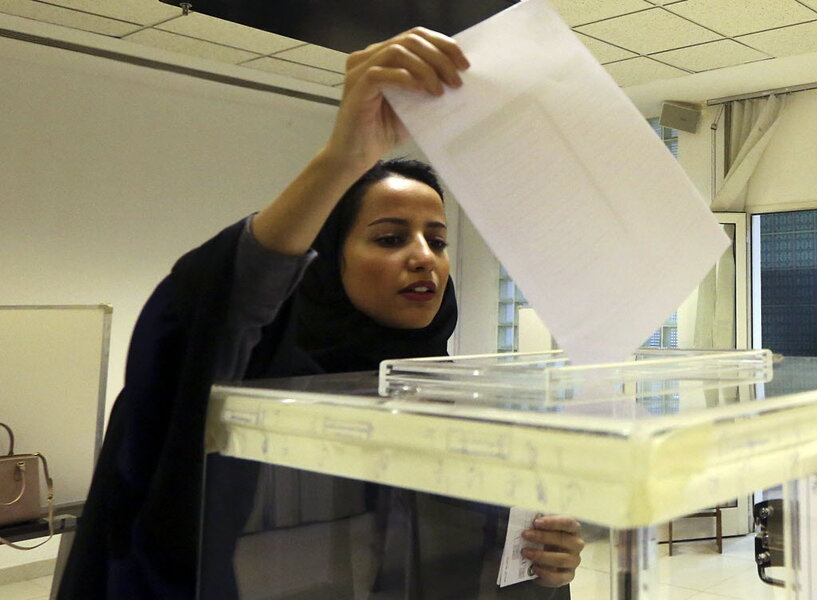What Saudi women voting says of the Mideast
Loading...
Historians of the Middle East may look back on 2015 as the year when Islamic State burst on the world scene and Iran struck a deal to curb its nuclear ambitions. Yet the region also has a quieter history, one of portents rather than power. On Dec. 12, or almost five years to the date after the Arab Spring began, women in Saudi Arabia were allowed to cast votes and run for office for the first time.
To be sure, this new right of Saudi women to participate in elected local councils was granted merely by a decree of the late King Abdullah, and perhaps only to shore up the monarchy’s legitimacy. Still, the truly historic part was this: More than 80 percent of eligible women voted – or almost twice as many as the number of men, and far above voter turnout in the West. Their rush to the ballot box was both inspirational and aspirational.
The Middle East is beset by at least four violent conflicts (in Syria, Iraq, Yemen, and Libya) yet the same social trends that led to the 2011 democratic revolts in Arab countries and to the 2009 Green Movement in Iran are still bubbling below the surface. In fact, popular frustration about jobs, dignity, or individual rights could be even higher than in 2010 when a young Tunisian fruit vendor lit himself on fire and ignited an anti-dictator rebellion in the region.
Polls confirm a steady support of democracy at about 70 percent. “Despite all the turmoil, relatively few citizens throughout the region have changed their views either about the degree to which their respective countries are democratic, or about democracy’s desirability,” writes Michael Robbins, director of the Arab Barometer opinion survey, in the October issue of Journal of Democracy.
Another survey of Islamists, conducted by academics Charles Kurzman and Didem Türko¢glu, finds support for democracy is rising even among these conservative Muslims. And a World Bank report last April said that governments of the Middle East and North Africa are “failing to meet the needs of citizens and continues to be a source of widespread dissatisfaction.”
The main root of instability in the Middle East, says State Department regional expert Anne Patterson, is the challenge to the political legitimacy of authoritarian rulers. “Even during these difficult days, there is evidence that irreversible changes are under way in the region,” she told Congress in October.
Most Arabs, says United States Secretary of State John Kerry, are “far more interested in plugging into the world economy than slugging it out with historic foes.” (About two-thirds of the Middle East population is under age 25.)
The news of Saudi women voting for the first time may seem minor, yet it helps counter the impression of a region doomed by ancient forces, wars, or by its own sense of historic victimhood.
“There is no such thing as a Middle East curse,” states French political scientist Dominique Moïsi in Les Echos newspaper. “To conceive of the Arab world only as a victim, a mindset that leads in turn to such visions as a reconstituted caliphate, is no proof of love.”





